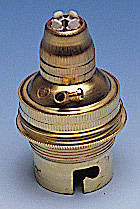Ah, I see. Interesting one, thatNo typo, a green and yellow conductor oversleeved with blue is the identification for a pen conductor so presumably cannot be used for a cpc used as a neutral (should a plumber wish).I think there's a typo in there somewhere. 514.4.3 is about PEN conductor identification.
In fact, it could be argued that 514.4.3 is the thing which is 'naughty', since the implication of everything else in 514.3 and 514.4 is that an oversleeving over-rides the colour underneath - i.e. that G/Y oversleeved with blue should indicate neutral and blue oversleeved with G/Y should indicate a protective conductor.
In any event, I would have to struggle pretty hard to think of a situation (at least, with 3-core cable) in which I would want to oversleeve a G/Y for use as a neutral. That would presumably arise only if I wanted the cable to carry two different neutrals and a L of some sort. With >3 cores, I suppose there might be some situations in which one wanted two separate neutrals (with corresponding Ls), but I would have thought that would be extremely rare. Even then, if one was hell-bent on oversleeving G/Ys, one could probably re-arrange things such that the G/Y was oversleeved with brown and something else oversleeved with blue.
If you replaced, say, a ceiling rose on such a circuit with a 'suitable accessory', would you feel able to sign a minor works cert, even though no CPC was run to that accessory, such that the end result was not BS7671-compliant?As for the lighting circuit, I believe we recommend, no insist on, the fitting of only suitable accessories or rewiring.
Kind Regards, John


